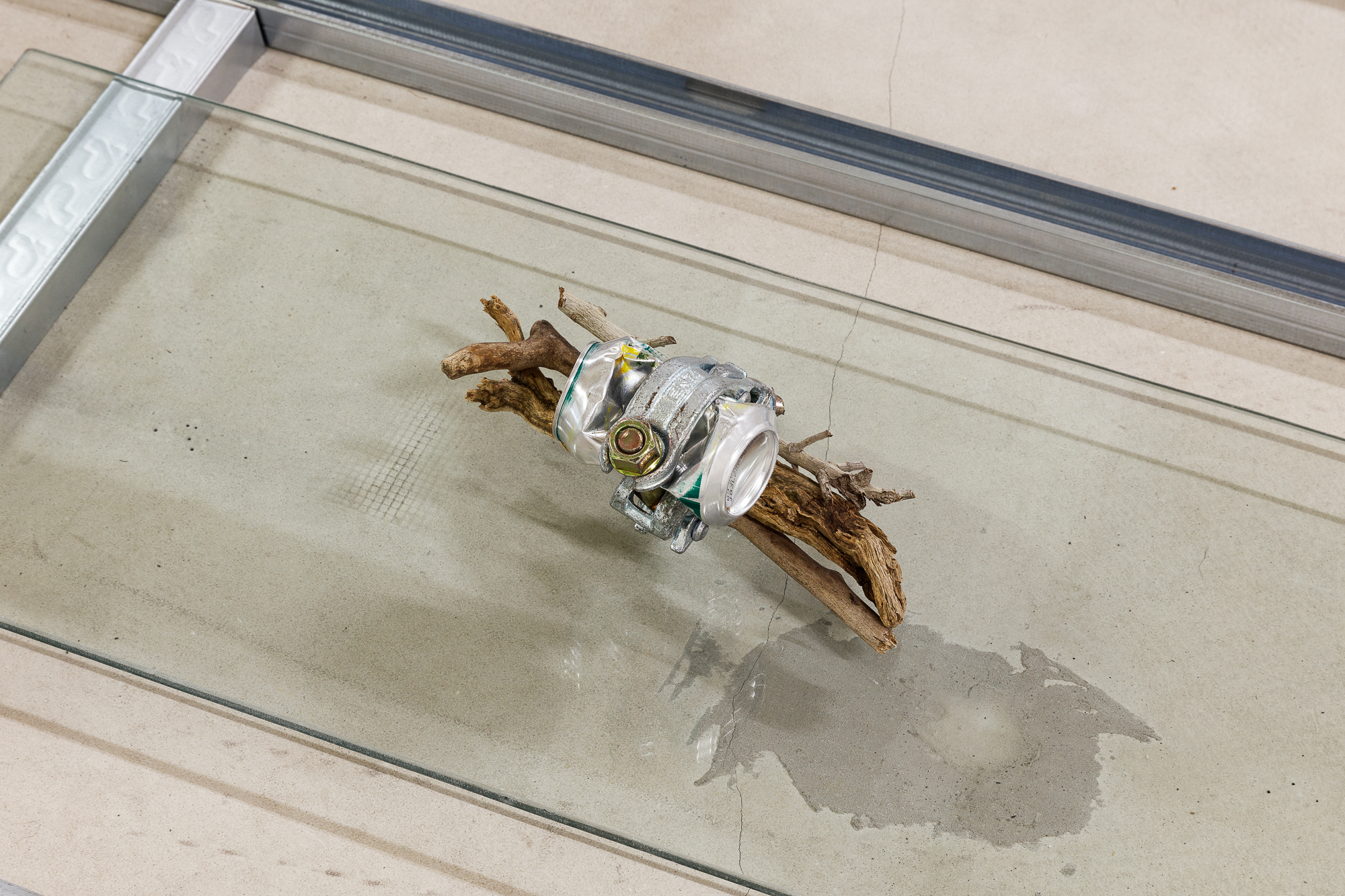Drifting Time Misplaced
March 31, 2023 — April 8, 2023
MONO, Lisbon, Portugal
Artists: Matias Romano Aleman, Pedro Barassi, Mariana Barrote, Gabriel Junqueira, Fernando Moletta
The group exhibition Drifting Time Misplaced takes a speculative fabulation approach by appropriating the opening chapter of Mary Shelley's science fiction novel The Last Man. Published in 1826 making it one of the first of its kind, Shelley's dystopian story begins with the discovery of a collection of prophetic writings, painted on leaves by the Cumean Sibyl, which contain a vision of the apocalyptic future. Connected by notions of contemporaneity, memory, time, science and technology in today's culture, the works by five artists perceived as prophetic Sibyl leaves forms an environment that explores the power of the chosen method and invites the visitors to start their own deciphering.


„I visited Lisbon in 2028. On the eighth of March that year, my companion and I crossed the ocean to visit the Manueline monuments that dot the Tagus estuary. The shimmering mixed waters of ocean and freshwater covered fragments of late Gothic that were interspersed with Atlantic seaweed, taking on a sheen of imperial topaz from the mixing of the sun's rays. Although it was the beginning of spring, the atmosphere seemed rather fitting for early summer, and its balmy warmth and the scent of jacarandas contributed to the feelings of quiet delight that are the lot of every traveller. After wandering through a mediaeval convent with no stone roof, ruins of past societies hidden beneath the surface of the city and classical sites, we eventually entered a gloomy garage that resembled the cave of the Cumaean Sibyl. Although unsure, with the help of flashlights that glowed coolly and almost duskily in the dark underground passages, we walked around a natural archway and eventually arrived at a monumental concrete bowels with a sharply vaulted ceiling, which we were assured was the Sibyl's cave.”





“Several small openings on the sides let in that golden light. The only sign that there was life here were scattered objects that still breathed their silent testimony. Tired of the effort of reaching this point, we took turns resting by these relics while the sounds of the city reached us from above. At last my friend, who had surveyed the scattered objects around us, exclaimed: "This is Sibyl's cave, these are Sibyl's leaves." "These are Sibyl's leaves," I said. Upon examination, we discovered that all the remains were truly prophetic signs in various codes and forms: world languages, visual narratives, audio recordings. They seemed to contain prophecies, detailed accounts of events that had happened only recently, names now well known but new; and their vessels often contained cries of exultation or grief, victory or defeat. This was certainly the cave of Sibylla; not, indeed, exactly as Virgil describes it, but the whole country was so convulsed with earthquake and raging fire that the change was not strange. We hastily deposited in our memories such leaves as at least one of us was able to understand the code of, and then, laden with our treasure, we bade farewell to the cave.“




The group exhibition Drifting Time Misplaced takes a speculative fabulation approach by appropriating the opening chapter of Mary Shelley's science fiction novel The Last Man. This approach is used to imagine worlds that may be radically different from the one we know through narrative practices, but also to develop spatially in order to achieve/invent new dimensions within the same physical layouts. Published in 1826 making it one of the first of its kind, Shelley's dystopian story begins with the discovery of a collection of prophetic writings, painted on leaves by the Cumean Sibyl, which contain a vision of the apocalyptic future. Through its catastrophic ending (the extinction of humanity in 2100), the novel emphasises that humanity is defined not solely by art, or religion, or politics, but by the basis of communities, fellow-feeling and compassion. This is because the disease is not only a biological phenomenon, but a sociological one as well. Connected by notions of contemporaneity, memory, time, science and technology in today's culture, the works by five artists perceived as prophetic Sibyl leaves forms an environment that explores the power of the chosen method and invites the visitors to start their own deciphering.
















































